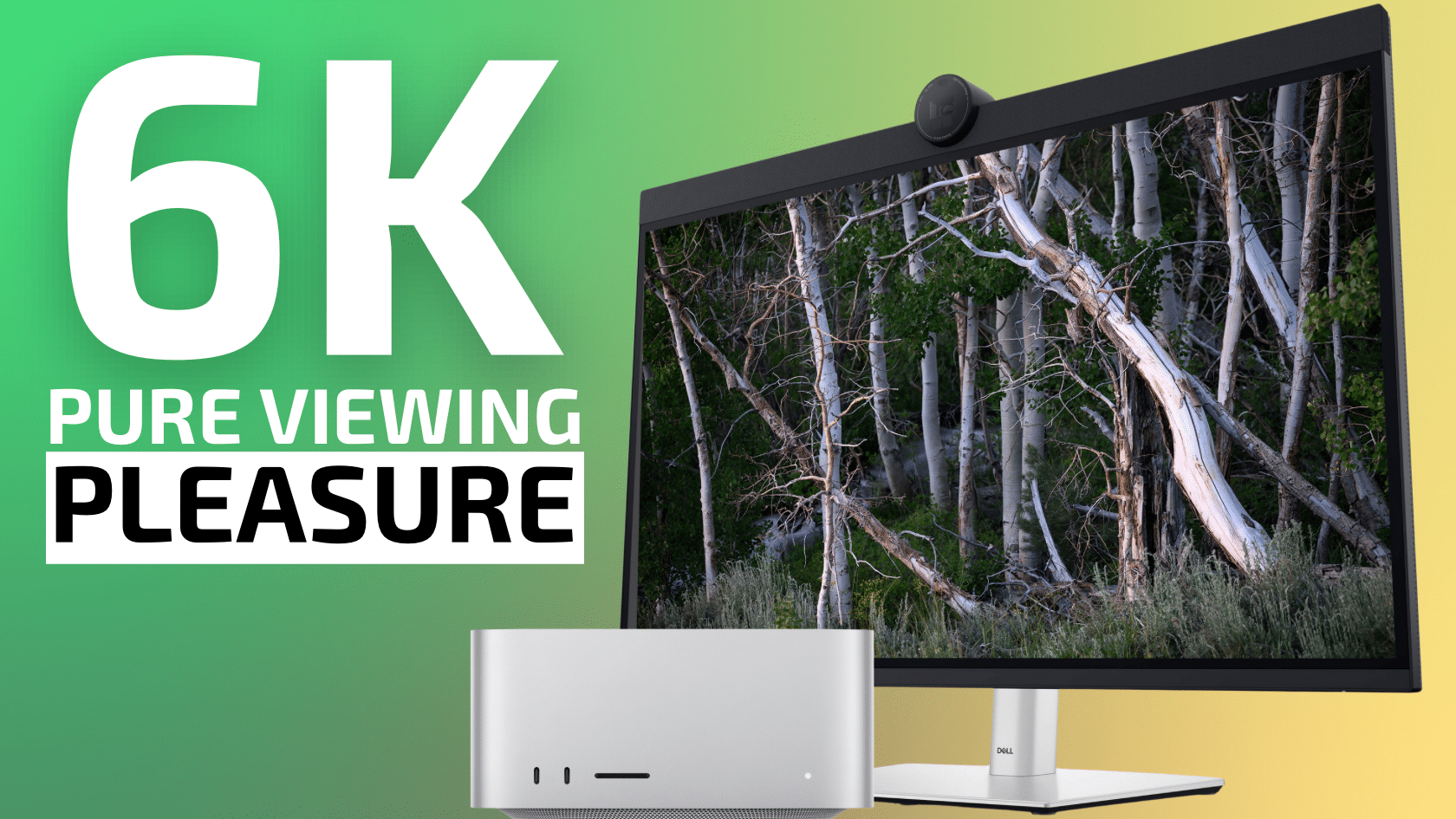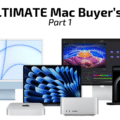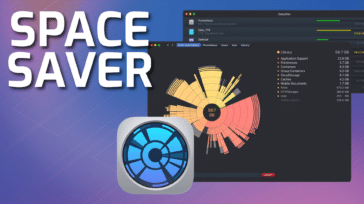
See previous article: The Golden Age of Photography is Now (and Tomorrow): A Visual Retrospective on How We Got There.
Whether it is images or spreadsheets or high-res video clips, you can’t beat a 6K display. It is pure viewing pleasure that has to be experienced to be understood.
But those who spend a lot of time viewing or editing photos will certainly see the biggest benefit from upgrading to 6K. Let’s look at why 6K is so much better than 5K or 4K.
The experience
Images look fantastic. While 5K displays are more common these days and some excellent displays have stuck with that resolution, the 6K resolution (21 megapixels) feels much more immersive and detailed than 5K (14 megapixels).
With 50% more pixels in an expansive 32-inch form factor, a 6K display is a very different feel from a 27-inch, 5K display like the Apple Studio Display or the iMac 5K.
Once you go 6K, you won’t ever want to go back to 5K or 4K or a tiny laptop display.
When it comes to exact resolution, this spec varies slightly between Apple and Dell, the only two 6K displays on the market as I write this. More on that below.
The Dell 6K offers 6144 X 3456 resolution ~= 21.2 megapixels. This is notably higher than the 6016 X 3384 of the Apple Pro Display XDR. That difference doesn’t sound like much, but the extra 128 pixels across helps many common camera images fit in their entirety, as opposed to being clipped-off—or worse—scaled to fit.
Camera image size vs. 6K
Many of today’s digital cameras were and still are 24 or 26 megapixel resolution, ranging from 6000 X 4000 or thereabouts, to 6192 X 4128 across range. The Dell 6K accommodates all 24MP and lower resolution cameras fully in image width and is only a few pixels short for 26MP cameras (eg 6192 X 4128). Height is not quite enough, but short of an 8K display that’s the best you can do.
12 megapixels: 4032 X 3024 eg Apple iPhone
18 megapixels: 4928 X 3264 eg Leica M9 and Ricoh GR
20 megapixels: 5472 x 3648 eg Sony ZV-1
24 megapixels: 6000 X 4000 eg Leica M240 and Sony RX1R and many others
26 megapixels : 6240 x 4160 eg Fujifilm X-S20
45 megapixels: 8256 x 5504 Nikon Z8
60 megapixels: 9504 x 6336 Sony A7R V
Below, a Leica M240 image doesn’t quite fill the screen horizontally and overflows just a bit vertically.

WARNING: you might feel disappointed when viewing your iPhone pictures on a 6K display. The 12-megapixel resolution doesn’t come close to filling the screen and the 48MP modes are little better than blurred-up 12MP versions. Still, they’ll look very nice. But you might want a real camera at some point, like the Sony A7R V.

Which Mac?
Nearly all Macs produced in the past few years can directly connect a 6K display, but be sure to check your specific model.
The best Macs for use with external displays are the Mac Studio, Mac Pro, and Mac mini. Of course, these require a display anyway. Laptops work well, particularly the MacBook Pro models, but they vary in the number of available Thunderbolt ports (more is better). The MacBook Air series can also work, but with fewer ports, you might have to plug other stuff into the display.
To properly use a laptop with an external display, you’re going to need a dock. The OWC Thunderbolt Go Dock gives you three Thunderbolt ports, a USB-C and USB-A ports, an SD card slot, and HDMI port and all without the need of a bulky external power brick. And if speed is what you need, the OWC Thunderbolt Pro Dock provides Thunderbolt, USB-C, USB-A, and DisplayPort connectivity along with 10GbE and a CFexpress card reader.
Tips:
- (for laptops) Consider a separate keyboard and mouse for vastly improved ergonomics.
- (for laptops) Add a small stand for the laptop for use as a 2nd display for palettes, etc. Or, close the lid and ignore the laptop screen.
- Plug in lower performance devices to the USB-C ports on the display.
- Plug in high-performance SSDs on other ports of the computer, not the display.
- Consider a Thunderbolt Dock connected to the computer, with the display connected to the dock.
Which 6K Display?
I am aware of only two 6K displays on the market here in 2024.
I do not recommend Apple’s 6K Pro Display XDR because (a) it is 2-3X the price of my recommendation, (b) has inferior color and grayscale uniformity, (c) inferior ergonomics (you’ll add$1000 for the stand alone!), and finally, (d) slightly lower resolution.
The Dell 6K is a ‘steal’ at about $2098. To see why, check out my in-depth 4-page review. And this wishlist at diglloyd.com.

Conclusions
A 6K display is a huge bump up from a laptop display or even a 5K display, with 50% more pixels and a luxurious 32-inch screen area. Once you experience it, you will never go back.
…
Need help working through your computing or photography system design? Consult with Lloyd before you potentially buy too much or too little, and see my Mac wishlist of current models, first pondering whether refurbished or used Macs might do the job for you.
View all posts by Lloyd Chambers… Lloyd’s photo web site is diglloyd.com, computers is MacPerformanceGuide.com, cycling and health are found at WindInMyFace.com, software tools including disk testing and data integrity validation at diglloydTools.com. Patreon page.










